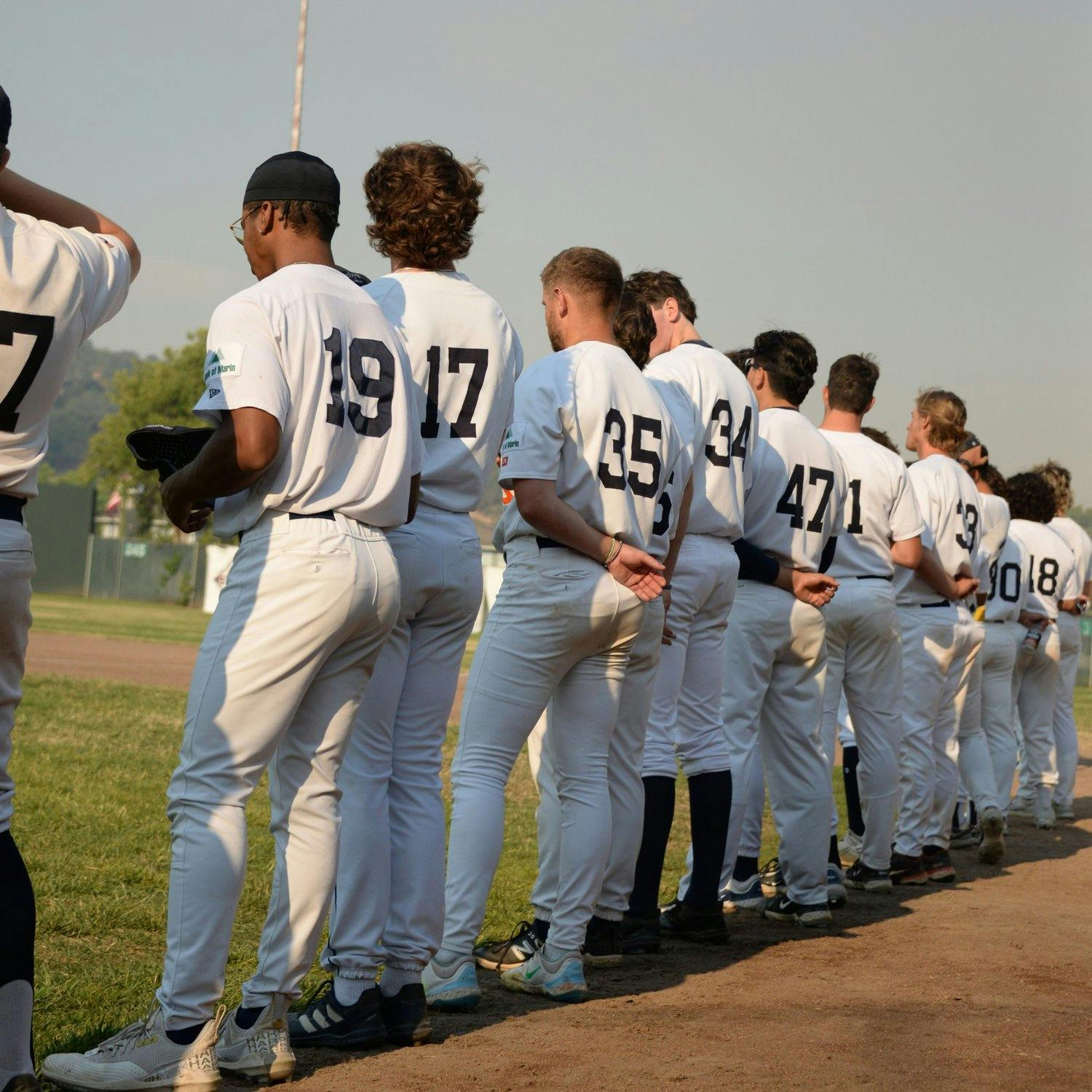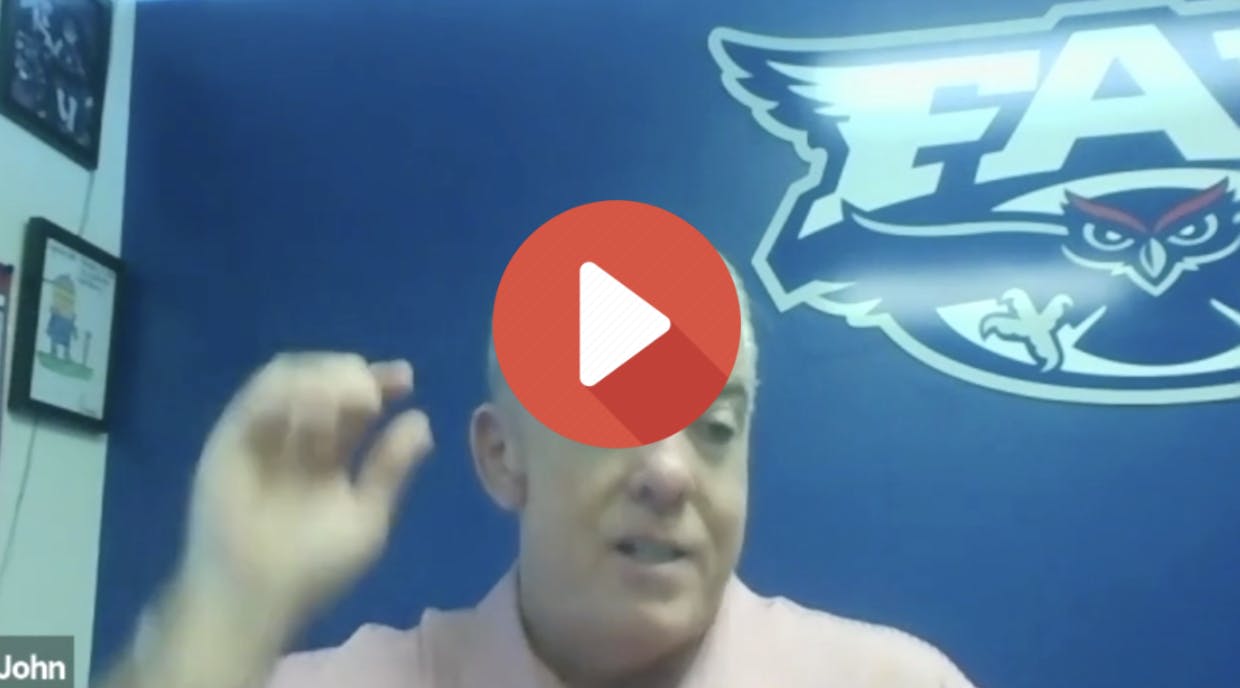Featured courses
- Understanding The Shift by Brandon Ogle
- Two Drills to Improve Outfield Movement and Communication by Grant Young
- The Ultimate Resource For Coaching Youth Baseball by Jackson Chlebowy
- Become a Master at Bunting by Brandon Ogle
- 5 Reasons Why There Is More To Good Base Running Than Just Speed by Brandon Ogle
- Three Injury-Prevention Tips For Your Offseason Pitching Program by Grant Young
- How to Teach Hitting to the Next Generation by Grant Young
- Developing Defensive-Minded Baseball Catchers by Grant Young
- 3 Baserunning Tips to Score More Runs in Baseball by Grant Young
- 5 Outfield Drills to Work on in Season by Alec Burris
- Keys For Scoring More With Runners on First and Third Base by Grant Young
- How to Develop Your Game to Become a Five-Tool Player by Brandon Ogle
- 3 Coaches Share the Keys to Running Baseball Practice the Right Way by Grant Young
- Four Drills to Sharpen a Baseball Hitter’s Vision at the Plate by Grant Young
- Four Quotes to Hit Better With Two-Strikes by Grant Young
- Four of Former MLB Pitcher Juan Nieves’ Movement-Based Pitching Drills by Grant Young
- Two Tips For Developing an Elite Baseball Bullpen by Grant Young
- Overcoming the Four Challenges of Indoor Baseball Practices Because of Weather by Grant Young
- Three Tips to Make Your Baseball Team Mentally Tougher by Grant Young
- Three Priceless Philosophies to Motivate Your Baseball Team by Grant Young
- Three Offseason Baseball Drills to Simulate Competition by Grant Young
- Three Baseball Offseason Strength and Conditioning Essentials by Grant Young
- Important Ways to Improve Your Baseball Team’s Baserunning by Grant Young
- Three Ways to Perfect Hitting Mechanics From an MLB Icon by Grant Young
- Catchers can influence pitchers...for bad or good by Drew Johnson
- Throwing Strikes and Playing Good Defense Equals Wins by Jose Ortiz
- Legendary Indiana Head Baseball Coach Bob Morgan’s Offensive Theory by Grant Young
- Tennessee Head Baseball Coach Tony Vitello on How to Practice Baserunning by Grant Young
- Three Great T-Ball Drills For Youth Baseball Players by Grant Young
- How to Manage a Baseball Pitching Staff by Grant Young
- Three Uncommon Tips to Become a Better Hitter by Grant Young
- How a Baseball Coach Can Develop Strike Throwers by Grant Young
- Drills to Develop Elite Baseball Outfielders by Grant Young
- Baseball Training Exercises to Strengthen Arm and Bat Speed by Grant Young
- How to Use Bunting to Score More Runs by Grant Young
- How To Build An Elite Baseball Infielder by Grant Young
- Three Drills to Improve Your Baseball Team's Infield Play by Grant Young
- Three Keys to Curating a Pitching Staff’s Success by Grant Young
- 3 Techniques to Develop a Baseball Player’s Hitting Approach by Grant Young
- How to Cultivate Confidence Within Your Pitchers by Grant Young
- 5 Every Day Drills To Help You Become A Better Catcher by tyler Linderman
- How to Throw A Curveball by Brandon Ogle
- How to Assemble a Lock-Down Bullpen by Brandon Ogle
- How to Throw a Sinker by Brandon Ogle
- How to be a Smart Baserunner by Brandon Ogle
- Improving a player's slugging average by Phillip Woolgar
- The 8 Fundamentals of Pitching by Drew Johnson
- How to Throw a Deceiving Changeup by Brandon Ogle
- Step Up Your Outfield Defense With These Three Drills by Jose Ortiz
- 8 Baseball Drills Every Player Should Practice by Drew Johnson
- How To Become An Elite Defensive Outfielder by Tyler Linderman
- 5 Tips For Crushing A Curveball by Johnny Grassi
- LEGENDS FOR YOUTH INCLUSION BASEBALL CLINIC by Phil
- Fourteen Ways To Turn A .300 Hitter Into A .210 Hitter by Jay P. Granat, Ph.D.
- How To Become The Ideal Leadoff Man by Brandon Ogle

How to Manage a Baseball Pitching Staff
- By Grant Young
Baseball pitchers have cultivated a reputation for being high maintenance over the years.
This is owed to a few reasons. One is that because pitching requires contorting the arm in such a way that’s unnatural to the human body, pitchers are more injury-prone than a position player would be and are therefore talking about their injuries more often.
There’s also the fact that only one pitcher can be in the game at a time, which means that all of the other pitchers must spectate from the dugout of the bullpen. This also lends itself to pitchers complaining about them not being the ones pitching.
While this is certainly not true for any pitcher or every pitching staff, everybody who has coached or played baseball has met a pitcher who is objectively high-maintenance, and potentially difficult to deal with.
This is why having a strategy to manage a pitching staff — and everything that comes along with that — is of paramount importance.
And John McCormack has created a blueprint for how to do that.
Coach McCormack completed his 16th year atop Florida Atlantic University baseball as head coach in 2024, and his 34th season with the program. He had previously served 11 years as associate head coach and seven years as an assistant coach, beginning in 1991.
Other accomplishments under McCormack include tying a national record for consecutive games won (34), and winning the Tuscaloosa Regional by defeating the nation’s No. 3-ranked team, Alabama, in 2002. McCormack was recognized with the AFLAC National Assistant Coach of the Year Award in 2003.
While Coach McCormack isn’t a pitching coach, his ‘How to Manage Your Pitchers & Bullpen’ course is perfect for pitching coaches and managers alike, when it comes to navigating your pitching staff from top to bottom and turning them from complainers to compliance.
Introduction
Coach McCormack notes that when it comes to constructing a good pitching staff at the college level, it’s all about being able to recruit.
He then says that the strategy for many college programs is to go out and get as many arms as possible, without any thought behind what their role might be once they get to campus.
But Coach McCormack then said that his strategy is going out and recruiting guys that he believes could develop into solid starting pitchers and also going out and recruiting guys that he believes can be effective out of the bullpen.
This is important for multiple reasons. One is that there’s a nuanced learning curve to pitching out of the bullpen at a high level. The entire preparation routine is vastly different from being a starting pitcher, and not every pitcher can be expected to acclimate to that right away in college if they’ve only been a starter their entire lives.
Another reason it’s important is because, as we’ve already established, some pitchers can be sensitive and somewhat high-maintenance. And if they only see themselves as a starting pitcher, being relegated to the bullpen can feel like a demotion. Of course, players who think like this aren’t the types of players a coach will want to have rostered.
This is a bit different in high school because coaches aren’t necessarily recruiting their players. But high school coaches can still teach their players that they’ll need to get comfortable throwing out of the bullpen because they’ll need to do it eventually if they want to play at the next level.
Plans For 2nd Tier Pitchers

Not every pitcher on a pitching staff can be the team’s best pitcher. While every guy wants to be the starting pitcher or the closer, those roles are reserved for the very best.
But what about the rest of the pitching staff? There are still a whole lot of innings to fill, and the success of who Coach McCormack calls, “second-tier pitchers” can often be the difference between success and failure in a season.
This is why Coach McCormack stresses that managers and pitching coaches need to be patient with their more promising second-tier pitchers. They need to give them an opportunity to pitch through some rough outings and work through their potential issues on the mound as early and as often as their win and loss record will allow.
Having a few solid second-tier pitchers who, despite perhaps giving up some runs or walking some guys, are reliable and steady more often than not is a huge asset. And the only way they can get to that point is if their head coach displays confidence in them; by affording them chances to go out and prove themselves when it really matters.
Summer Baseball Management
Regardless of what level you’re coaching at, you’re doing to have to deal with pitchers taking part in separate summer baseball leagues and teams.
This can be tricky because you’ll need to trust that these players are safely going about their business, aren’t listening to coaches who you don’t trust, and are making a genuine effort to improve. And Coach McCormack has a few great suggestions on how to best go about this.
The first bit of advice that Coach McCormack has is that he wants his players to promise him that they’ll be as honest as possible with their summer baseball coach about their health and what they’re trying to work on.
There’s no reason for a starting pitcher to be throwing through an injury during summer baseball. That doesn’t mean they can’t pitch through normal soreness or fatigue, but if there’s an actual injury that might be welling up, that pitcher needs to inform their coach and pump the brakes.
And the player can’t lose sight that the main goal of summer baseball is to improve for their actual season.
These tips should help get pitchers out of their high-maintenance phase and prepared to help their team win games by any means necessary.



